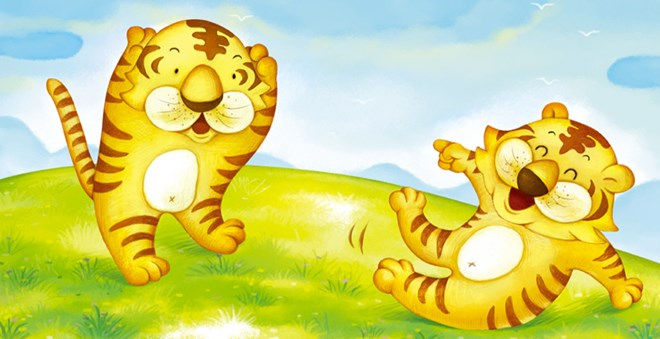3 NURSERY RHYMES TO HELP KIDS LEARN CHINESE
- S.K
- Sep 1, 2019
- 3 min read
Do you often sing English nursery rhymes such as “Mary Had a Little Lamb” or “London Bridge” with your children? If your children have started to study Mandarin Chinese, you can consider teaching them a few Chinese nursery rhymes. They are especially a fantastic learning tool for younger children.
WHY ARE NURSERY RHYMES A USEFUL LEARNING TOOL?
Not only are nursery rhymes (known as "童谣 (tóng yáo)" in Chinese) fun and catchy as pop songs, what makes nursery rhymes especially great for beginner Chinese learners are two things: simple vocabulary and repetition.
Nursery rhymes are generally designed to contain simple vocabulary that are crucial for children to learn at a young age. As the kids begin to grasp the new vocabulary, the nursery rhyme is then designed to repeat those words in the lyrics, making it easy for your children to naturally practice and remember the words.
Lastly, some nursery rhymes are songs that have been passed down through the generations, with lyrics that have close ties to Chinese history and pop culture. By teaching nursery rhymes to your children, you are connecting them to a pool of knowledge that is shared with their peers in China.
POPULAR NURSERY RHYMES
“小燕子” (XIǍO YÀNZI) – THE LITTLE SWALLOW
Easily one of the most popular nursery rhymes in mainland China, “小燕子” has been a hit since it was first played in 1957. This song expresses the little swallow’s love for nature, spring, and its home. Lyrics and Pinyin are included below, and you and your children can also follow along with the tune here.

小燕子, 穿花衣, 年年春天到这里,
Xiǎo yànzi, chuān huāyī, nián nián chūntiān dào zhèlǐ
Little swallow, wearing colorful clothes, returns here every spring
我问燕子你为啥来, 燕子说, 这里的春天最美丽
Wǒ wèn yànzi nǐ wèi shà lái, yànzi shuō, zhèlǐ de chūntiān zuì měilì
I ask the swallow why it comes here, the swallow says: “The spring here is the most beautiful.”
“两只老虎” ( LIǍNG ZHĪ LǍOHǓ) – TWO TIGERS
This is a silly and nonsensical tale about two tigers. One tiger is missing its ears (耳朵 Ěrduǒ) , and the other is missing its tail (尾巴 wěibā). Find the tune here.

两只老虎,两只老虎,跑得快跑得快,
Liǎng zhī lǎohǔ, liǎng zhī lǎohǔ, pǎo dé kuài pǎo dé kuài,
Two tigers, two tigers, running fast, running fast
一只没有耳朵,一只没有尾巴,真奇怪,真奇怪
Wǒ wèn yànzi nǐ wèi shà lái, yànzi shuō, zhèlǐ de chūntiān zuì měilì
One has no ears, one has no tail, so strange, so strange
小兔子乖乖 (XIǍO TÙZǏ GUĀIGUĀI) – THE GOOD LITTLE RABBIT
The nursery rhyme “The Good Little Rabbit” actually comes from a well-known children’s story. In the story, Mama Rabbit had to leave the house, and instructed her three children not to open the door for anyone who isn’t her. After she leaves, a big bad wolf comes to knock on the door, but the good little rabbit listened to Mama Rabbit, and did not open the door. This song is often used by Chinese parents to teach their children about “stranger danger.” You can find the tune and an adorable video for it here.

小兔子乖乖, 把门儿开开
Xiǎo tùzǐ guāiguāi, bǎmén er kāi kāi
Good little rabbit, open the door
快点儿开开, 我要进来
kuài diǎn er kāi kāi, wǒ yào jìnlái
Open it quickly, I want to come in
不开不开我不开, 妈妈没回来, 谁来也不开
bù kāi bù kāi wǒ bù kāi, māmā bù huílái, shuí lái yě bù kāi
I won’t open it, if mom is not home, I won’t open it for anyone
小兔子乖乖, 把门儿开开
Xiǎo tùzǐ guāiguāi, bǎmén er kāi kāi
Good little rabbit, open the door
快点儿开开, 我要进来
kuài diǎn er kāi kāi, wǒ yào jìnlái
Open it quickly, I want to come in
就开就开我就开, 妈妈回来了, 快点把门开
jiù kāi jiù kāi wǒ jiù kāi, māmā huíláile, wǒ jiù bǎmén kāi
I’m opening it, mom has returned, so I’m opening the door
By singing these nursery rhymes, your children will not only be able to practice Mandarin Chinese, but they will also feel proud of what they are able to accomplish with their new Chinese skills.

Comments